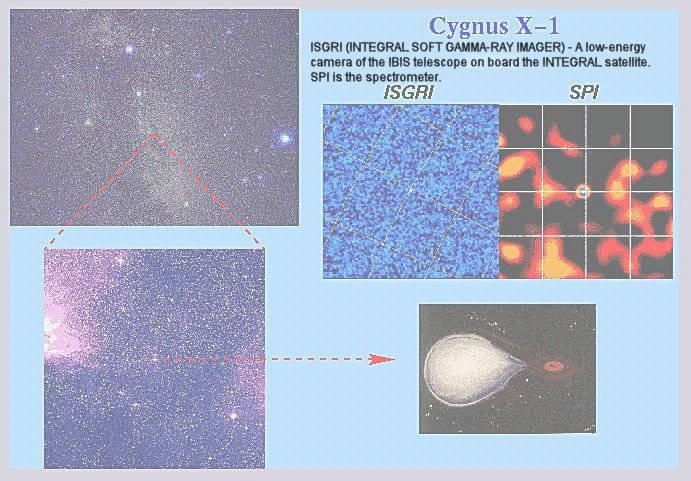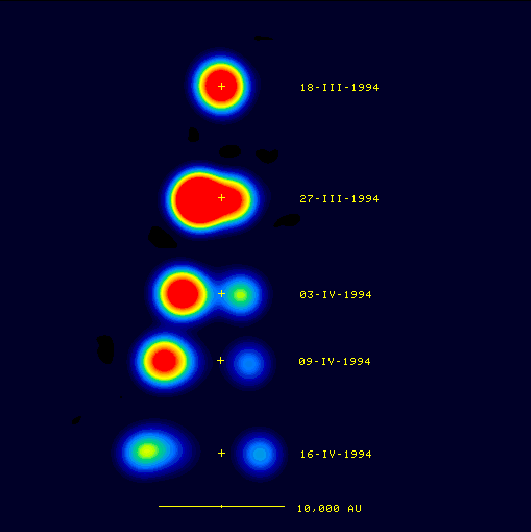
| Home Page | Overview | Site Map | Index | Appendix | Illustration | About | Contact | Update | FAQ |
 |
Most black holes are said to be stellar: formed from stars. It is estimated that the Milky Way contains 10 million of these black holes. Their mass can be 10 times that of the sun and the radius of event horizon can be a few kilometers. Because not even light can escape from inside the event horizon, it is hard to detect black holes. Astronomers get around this problem by indirect observations on some signatures, which are peculiar to a black hole. It usually involves the interaction of the black hole with its environment, e.g., a companion star. Figure 08-21 is a model of a stellar black hole drawing material (the accretion stream) from the companion star. The accretion stream forms an accretion disc before finally spiraling into the black hole and generates bursts of X-rays. |
Figure 08-21 Blackhole Model |
 |
 |
 |
GRS1915 is probably the largest stellar black hole discovered; while the X-ray source GRO J0422+32 near V518 Persei seems to be the smallest with a mass of 3 to 5 Msun. |
Figure 08-22 Cygnus X-1 |
Figure 08-23 V404 Cyg |
Figure 08-24a GRS1915 |
| Final Event | Initial Mass (Msun) / Type | Final Mass (Msun) | Life Time (109 yrs.) | Heaviest Element Synthesized | Residual Core |
|---|---|---|---|---|---|
| Gradual Cooling | < 0.1 / M7 | same | > 1000 | Helium | Brown Dwarf |
| Stellar Wind | < 0.4 / M5 | ~ same | > 200 | Helium | White Dwarf |
| Stellar Wind or Planetary Nebula |
< 1.0 / G2 | < 0.7 | > 10 | Helium or Carbon | White Dwarf |
| Planetary Nebula | < 3.0 / A0 | < 0.8 | > 0.35 | Oxygen | White Dwarf |
| Supernova, Type I / II | < 10 / B5 | < 1.5 | > 0.02 | Oxygen or Silicon | White Dwarf or Neutron Star |
| Supernova, Type II | < 15 / B1 | < 10 | > 0.01 | Silicon or Iron | Neutron Star or Black Hole |
| Supernova, Type II | < 30 / O8 | < 20 | > 0.004 | Iron | Black Hole |
 |
 |
other than hydrogen and helium), their fates are depicted in Figure 08-24b. The Iron-core-collapse supernova turns the iron core into neutrons and neutrinos leaving a neutron star behind. The pair-instability supernova (as discussed earlier) blows the whole thing apart leaving nothing behind (as recently observed in SN2007bi). The dotted line marks the point above which pair-unstable stars are thought to form black hole instead of exploding. The blue shaded area denotes a transition region in which stars first become 'pair unstable', but eventually undergo iron-core collapse. Triangles and |
Figure 08-24b High Mass Supernovae |
Figure 08-24c Types of Supernovae |
squares denote values obtained by different theoretical studies; green triangles for zero metallicity. Figure 08-24c displays a pictorial explanation for these types of supernovae. |